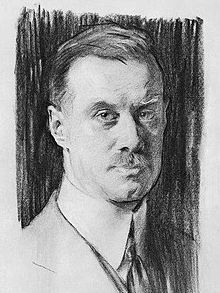Guy Lowell
| Guy Lowell | |
|---|---|
 |
|
| Born |
August 6, 1870 Boston, Massachusetts |
| Died | February 4, 1927 (aged 56) Madeira Islands |
| Nationality | American |
| Occupation | Architect |
| Buildings |
Spring Lawn Boston Museum of Fine Arts Natirar New York State Supreme Courthouse Grosse Pointe Yacht Club |
Guy Lowell (August 6, 1870 – February 4, 1927), was an American architect and landscape architect.
Born in Boston, Lowell was the son of Mary Walcott (Goodrich) and Edward Jackson Lowell, and a member of Boston's well-known Lowell family. He graduated from Noble's Classical School (later Noble and Greenough School) in 1888 and from Harvard College in 1892, and received his degree in architecture from the Massachusetts Institute of Technology in 1894. He then studied landscape and horticulture at the Royal Botanic Gardens, Kew, and architectural history and landscape architecture in the atelier of Jean-Louis Pascal at the École des Beaux-Arts in Paris, with diplomé in 1899. In the middle of these studies he married Henrietta Sargent, the daughter of the director of Harvard's Arnold Arboretum, Charles S. Sargent of Brookline, Massachusetts, on May 17, 1898.
Returning to the United States, Lowell opened his own practice in Boston in 1899 and was successful immediately. By 1906, he had opened a branch office in New York and later split each week between New York and Boston. His commissions included large public, academic, and commercial buildings, as well as many distinctive residences, country estates, and formal gardens. He was the architect and landscape architect for the first Charles River dam, completed in 1910, which transformed the tidal river into the Charles River Basin. He designed five structures on the dam: the Upper and Lower Lock Gate Houses, the Stable, the Boat House, and an open pavilion. As part of the dam's construction, Frederick Law Olmsted's Charlesbank was extended from Charles Circle to the Harvard Bridge, and Lowell was responsible for the landscape design of the Boston Embankment, now universally known as the Esplanade. Lowell is perhaps most recognized for his design of two public buildings: the Boston Museum of Fine Arts (1906–09 and later additions) and the New York State Supreme Court building in New York City (1912–1914 and 1919–1927). Some of his other commissions included Lowell Lecture Hall at Harvard and academic buildings at Phillips Academy Andover, Simmons College, and Brown University.
...
Wikipedia
